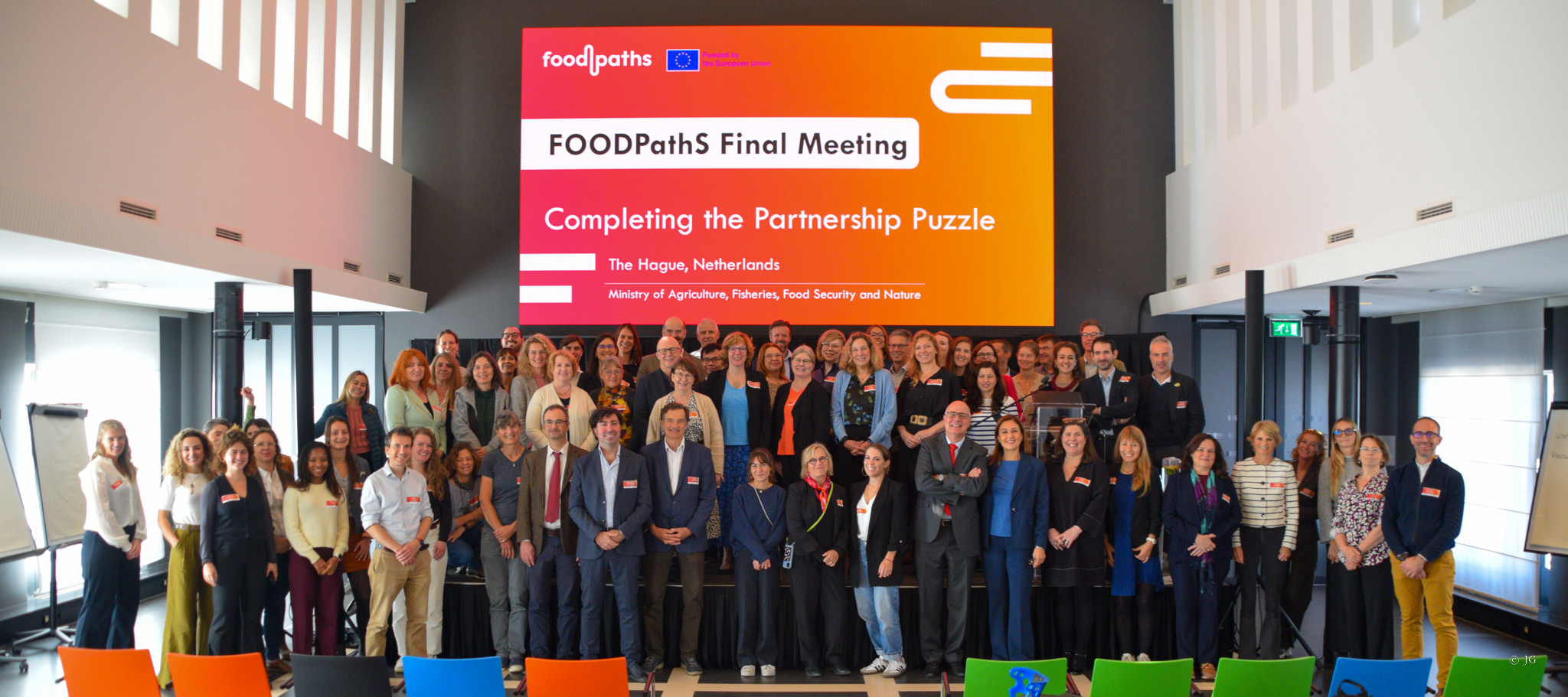Events & Media | 11 Jun 2025
FOODCastS Episode 2: Exploring the Planetary Health Diet
What if your next meal could help fight climate change and boost your health? In Episode 2 of FOODCastS, we dive into the Planetary Health Diet — a bold vision for eating that’s good for both people and the planet.

In a world where climate change and health crises are increasingly intertwined, finding a way of eating that tackles both can feel like an impossible mission. But what if your daily food choices could actually support your well-being and help protect the planet?
Keep reading for key insights and reflections from the episode’s rich discussion.👇
What is the Planetary Health Diet?
Developed by the EAT-Lancet Commission in 2019, this evidence-based framework represents a groundbreaking collaboration between 37 scientists from 16 countries, spanning disciplines from nutrition science to environmental studies.
At its core, this diet aims to:
- Improve human health by reducing the risk of chronic diseases like diabetes, heart disease, and cancer
- Decrease environmental impact by lowering greenhouse gas emissions associated with food production
- Ensure sustainable food systems capable of feeding our growing global population
Dr. Nita Forouhi describes it as a “win-win diet” that benefits both people and the planet.
What makes this diet different?
This diet isn’t about strict rules — it’s about balance and flexibility, built on some core principles that support both your health and the planet.
✅Foods to eat more of:
🍎Fruits & veggies – The stars of every meal! Packed with vitamins, minerals, fiber, and flavor.
🫘Legumes (like beans, lentils, peas) – Great plant-based protein and good for your gut.
🌾Whole grains – Think brown rice, oats, quinoa… They give you long-lasting energy and important nutrients like B vitamins.
🥜Nuts & seeds – Tiny but mighty! Full of healthy fats, protein, and essential micronutrients.
🔄Foods to enjoy in moderation:
🍗 Animal-based proteins – Still on the plate, just in smaller portions than typical Western diets.
🧀 Dairy products – Can be included, but go for moderate amounts.
🍬 Added sugars – Best to keep these low, but no need to cut them out completely.
“One can have quite a flexible diet within the planetary health diet,” notes Dr. Forouhi.
Real-life experiences
The podcast featured testimonials from volunteers who tried the Planetary Health Diet for five days. Their experiences revealed several common themes:
Positive
- Creative freedom: Many appreciated the ability to be creative with meal planning
- Energy boost: Volunteers reported feeling more energized
- Sustainability satisfaction: Participants felt good about making environmentally conscious choices
- New food discoveries: The diet encouraged trying unfamiliar ingredients and preparation methods
Challenges
- Concerns about protein intake: Some worried about getting enough protein without regular meat consumption
- Family adaptation: Questions arose about how families with children might adopt this approach
- Cooking skills: Those less comfortable in the kitchen wondered if they’d struggle with implementation
One volunteer remarked: “Even though I genuinely enjoy veggies, cooking every day can feel like a chore, and coming up with creative meal ideas isn’t always easy. But over the past few days, I’ve actually been looking forward to cooking, sharing what meals I’m making, and getting excited about it.”
Common misconceptions about the Planetary Health Diet
The protein question
“In many countries, we are over-consuming protein, not under-consuming it,” Dr. Forouhi explains.
The Planetary Health Diet provides approximately 14% of energy from protein, which meets recommended guidelines. More importantly, research indicates that plant proteins are associated with better health outcomes than animal proteins when it comes to chronic disease risk and longevity.
For most people, the challenge isn’t getting enough protein but rather overcoming the perception that only animal products provide adequate amounts.
Cultural adaptation concerns
Another common misconception is that the diet might work for some cultures but not others. In reality, the Planetary Health Diet was designed to be highly adaptable across different regions and food traditions.
“The whole point is that it should be locally adaptable, and wherever possible, the food sources should be locally sourced as well because that also helps with the environmental impact,” says Dr. Foroughi.
An updated report expected in 2025 will showcase practical examples of the diet adapted to different cuisines worldwide, demonstrating what it looks like “in Mexico, in China, in India or in Tanzania.”
Solutions for implementing the Planetary Health Diet
Despite its evidence-backed benefits, widespread adoption of the Planetary Health Diet faces economic and structural barriers (Food pricing, Food availability, marketing influence…). Where are potential solutions?
- Policy changes: Governments can implement measures to make healthy foods more affordable
- Better product placement: Prominently featuring nutritious options in stores increases their selection
- Early education: Introducing children to diverse healthy foods shapes lifelong preferences
- Community support: Local initiatives can improve food access and literacy
As Dr. Forouhi notes, “We have to reorientate our priorities in food production from high quantities and high profit-making ultra-processed foods to producing healthy food, minimally processed food that people can use.”
Transforming our global food system requires both personal commitment and structural change.
How to start your “Planetary Health Diet” journey?
➡️Start small – Add more plant-based meals to your week, but no need to cut out animal products completely.
🌀Mix it up – Try a variety of fruits, veggies, legumes, and whole grains to keep things tasty and balanced.
🍲Learn a few go-to recipes – Find dishes you love that work with whatever is in season.
♻️Waste less – Plan your meals, store food smartly, and get creative with leftovers.
🛒Shop local – Support nearby farmers and help cut down on food transport emissions.
To wrap up…
The Planetary Health Diet represents a thoughtful solution to two of our greatest challenges: improving human health while preserving environmental sustainability. Its flexibility, scientific foundation, and adaptability make it a practical approach for individuals concerned about both personal wellbeing and planetary health.
With ongoing research, increasing awareness, and growing policy support, the Planetary Health Diet may well become not just a recommended approach but the new normal for sustainable eating in the decades to come.
🎧Ready to listen? Tune in to Episode 2 of FOODCastS here.👇
Speakers of this show
- Professor Nita Forouhi (MRCP, PhD, FFPH, FMedSci) is a physician-scientist and Professor of Population Health and Nutrition at the University of Cambridge, where she leads the Nutritional Epidemiology Programme at the MRC Epidemiology Unit. She is also a Senior Investigator with the NIHR and serves as an honorary consultant with the UK Office for Health Improvement and Disparities. Her research focuses on the links between diet, nutrition, and chronic diseases such as type 2 diabetes, cardiovascular disease, and obesity, with an emphasis on prevention strategies for diverse global populations. Professor Forouhi brings her expertise to numerous influential roles, including as a commissioner for the EAT-Lancet Commission and co-chair of the WHO Guideline Development Committee on animal source foods. She also advises the British Medical Journal’s Food for Thought series and contributes to various national and international public health initiatives.
- Florentin Ndizeye is the collaborative projects manager at EUFIC and is the host of this podcast episode.

